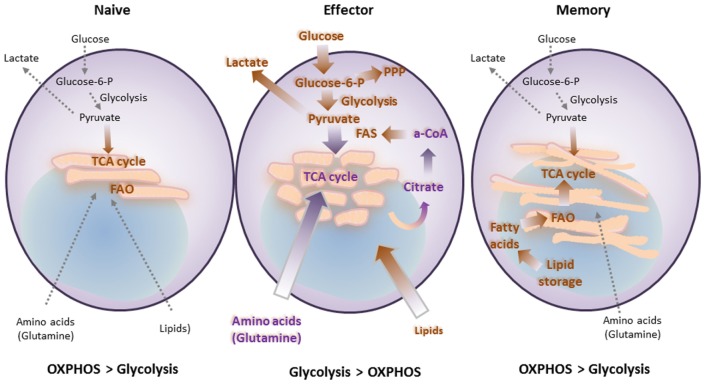Figure 2.
T cell differentiation is accompanied by metabolic changes, which are affected by costimulatory and coinhibitory receptors. Naïve T cells function in antigenic surveillance and do not proliferate. This requires minimal energetic and biosynthetic activity, which is represented by a metabolically quiescent state, and is accompanied by minimal nutrient uptake. Their only energy-demanding processes are ion homeostasis, membrane integrity, and movement. The primary ATP sources are oxidative phosphorylation (OXPHOS) and fatty acid oxidation (FAO) to fuel the low energy demand. Upon antigen encounter T cells differentiate into effector cells. This process is accompanied by metabolic changes, which are required to fulfill their new (effector) functions and rapid proliferation. Uptake of nutrients is enhanced. Glucose is the main nutrient used for energy and for generation of biosynthetic precursors. These changes combined with increased glutaminolysis and a high degree of protein, lipid, and nucleic acid synthesis support cell growth and proliferation. These metabolic changes coincide with mitochondria fission. Memory T cells do not proliferate and thus have minimal biosynthesis and nutrient uptake. However, they have increased spare respiratory capacity, which supports their ability to rapidly proliferate upon re-encounter of antigen. This cellular fate includes another metabolic adaption, which supports metabolic switch to FAO via increased carnitine palmitoyltransferase 1A. These metabolic and energetic changes are supported by fusion of mitochondria.

